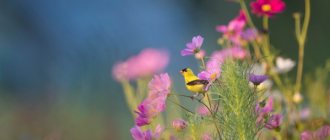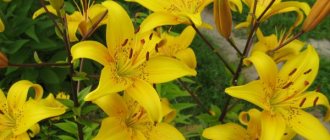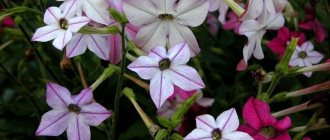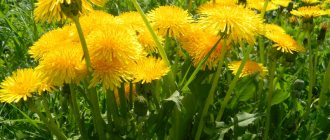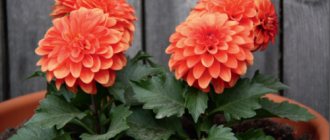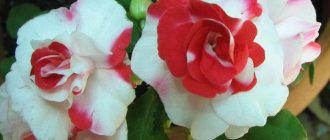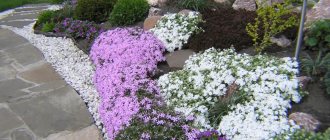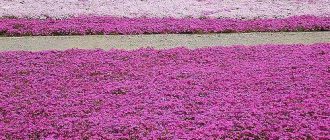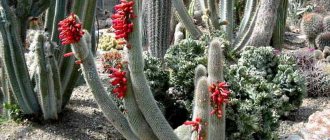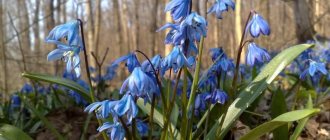Loading…
Loading…
In the floodplains of rivers and lakes in spring and summer you can find a wide variety of vegetation: meadow flowers and grasses create a variegated or delicate coloring of earthly clothing. Perennial, biennial, and annual flowers are found in fields and meadows; they reproduce by seeds (self-sowing), roots (vegetatively), and pollination (with the help of birds and insects).
Different geographical zones differ in their characteristics and names of growing herbs, which choose a more comfortable climate for ripening and reproduction. Plants and flowers of fields and meadows can be creeping, low-growing (up to 15 cm), medium and tall light-loving (up to 2 m). Meadow and field plants are bright, delicate, bicolor, variegated, and dark. The predominant colors among them are: yellow, blue, purple, white, pink, red.
Yellow grasses of natural landscapes
A huge number of aromatic, tart or delicately smelling herbs have yellow inflorescences: goose onion, elecampane, delphinium, sweet clover, rapeseed, lumbago, navel, lupine, tansy, buttercup, dandelion and many other useful and beautiful plants. Some yellow meadow flowers, their photos and names are presented in this section.
Goose onion
A low-growing plant no higher than 15 cm, it has long leaves growing at the roots, small bright yellow flowers that smell distinctly of honey. Used as a cosmetic and medicinal product.
Elecampane
It grows in bushes up to 1 m high. The leaves are narrow, light green, the inflorescences are orange or yellow. Flowers are single or in bunches. Used for face and body care, as well as in folk medicine.
Sweet clover
Sweet clover is also a yellow wildflower. This is one of the tallest flowers, growing above human height (up to 2 m). The stems are evenly covered with three-fingered leaves. Small flowers (yellow or white) are arranged in racemes.
Sweet clover heals wounds, relieves inflammation and cramps, and treats wet cough.
Delphinium
This bush plant is even taller - up to 1.5 m. The area at the roots is equipped with narrow lancet leaves. The flowers are small, come in different colors, including yellow, and are arranged pyramidally on a long stem. Delphinium is added as a beneficial component in soap production.
Field plants with yellow inflorescences can continue the above list. These include: zopnik (or fever root), St. John's wort, tansy, spring Adonis, buttercup, sow thistle, goldenrod, rapeseed, mullein, goldenrod, celandine, swimsuit and many others.
Blue wildflowers
The main blue flowers of meadows and fields include: chicory, common aquilegia, gentian, delphinium, field larkspur, lupine, cornflower, peach bell, multicolored pansies with a predominance of blue-violet color, and common bruise. Here are photos of blue wildflowers with names.
Chicory
It has a powerful, fleshy root filled with milky juice. The stem with multiple branches grows up to 120 cm in height. The leaves grow from the middle part of the stems and are collected in rosettes. The flowers of this meadow plant are blue-blue (there are white and pink varieties), with jagged petals, bordered by leaves, located along the length of the stems and at their tops. Loves the sun, flowers close in the afternoon.
Chicory is good for the nervous system, heart and blood vessels, kidneys and liver. It is a healing food for animals.
Aquilegia vulgaris
Bush meadow flowers of medium height (up to 80 cm). They are not afraid of frost. Large inflorescences on tall thin stalks can be of a wide variety of colors: blue, white, red, pink, purple, black, lilac. Aquilegia treats pneumonia, sore throat, skin diseases, wounds and burns, scurvy, headaches and stomach pains.
Gentian
It is a subshrub with a permanent lower part in the form of bush branches and a replaceable herbaceous top. Reaches a height of 1.5 m. It has memorable flowers in the form of large bells of blue, purple and soft blue color. Gentian root is used for indigestion, gout, eye diseases, anemia, diathesis, and heart failure.
Cornflower blue
Reaches 1 m in height, the leaves are elongated, of a faded green hue. The flowers grow in a basket of beautiful blue color. Used to treat kidneys, urinary tract, cardiovascular system, eye and women's diseases, joints, stomach.
Purple meadow plants
Djungarian aconite, comfrey, peach-leaf bell, gentian, mouse pea, lumbago, pansy - purple wildflowers, the names and photos of some of them are shown in this section.
Djungarian aconite
It grows in the form of a bush, loves a lot of sun, so it reaches a height of up to 2 m. The leaves are soft, round in shape, cut into 5 parts. The inflorescences are large, five-petaled, dark purple. Used for anemia, infertility, diabetes, angina pectoris, ulcers, bronchitis, arthritis, psoriasis, lice, cancer, poisoning with poisonous mushrooms.
Comfrey officinalis
These meadow flowers are a tough, rough plant, the maximum height is up to 90 cm. The stem is branched, the leaves are oblong, larger at the base. The flowers are violet with a purple tint and have the appearance of a tubular bell. The beneficial properties of comfrey root are used to relieve inflammatory processes, stop bleeding of various origins, treat tumors and ulcers, relieve fractures and dislocations, and confidently eliminate the purulent process.
Benefits of meadow herbs
Wildflowers and herbs can bring both benefit and harm to humans. Some plants are rich in proteins and nutrients: sweet clover, alfalfa, red clover. There are also poisonous representatives: wild radish, datura, buttercup, poisonous wech, larkspur and others.
Dandelion contains about 50 medicinal components. Bitter substances (taraxins) are used in the treatment of the liver and gall bladder. The roots contain betasitosterol, an anti-sclerotic agent. In France, dandelion is grown for salads.
Djungarian aconite is used as a medicinal plant for arthritis, anemia, psoriasis, diabetes, infertility, cancer, lice, ulcers, angina pectoris and many other ailments.
Sweet clover is used to treat coughs, cramps and as a wound healing agent.
Siberian hogweed has the ability to treat sexual disorders, diseases of the digestive system, inflammation of the joints, cramps, and arthritis.
Important! Preparations based on hogweed increase the photosensitivity of the skin due to the content of furocoumarins.
Yarrow is a medicinal plant with a wide spectrum of action. But you need to be careful when taking it orally, as an overdose of yarrow leads to skin rashes and dizziness.
Rhizomes and roots of meadow valerian are used to reduce the excitability of the central nervous system.
Mint can treat almost all colds and pulmonary diseases. Used for problems with the digestive system. The estrogen contained in mint has a rejuvenating effect on women.
White, red, pink, white-pink, lilac flowers of fields and meadows
Many colors of different scales and shades can be seen during flowering time in meadows and fields. The wild flowers of Russia are pleasing to the eye when meeting nature (see below for photos of flowers and names): marshmallow, amaranth spicata, wild rosemary, valerian officinalis, anemone, meadow carnation, snake knotweed, cuckoo adonis, wintergreen, wild onion, angustifolia fireweed (fireweed), clover, Russian hazel grouse, cumin.
Althaea officinalis
A low flower up to 50 cm tall with oblong greenish leaves located along the entire height of the stem: larger at the bottom, gradually smaller at the top. Pale pink flowers grow one at a time and can reach 10 cm in diameter. Althea is not adapted to severe frosts, but feels comfortable in central Russia. The root of the flower is used to treat coughs and stomach ulcers, and improve immunity.
Valerian officinalis
Stretches up to 1.5 m in height. The leaves are attached to the stem by a long petiole. Light pink fragrant inflorescences look like umbrellas. In medicine, a drug based on valerian root is used as a sedative for headaches, blood pressure, angina, thyroid diseases, cholelithiasis, problems in the urinary tract, and during menopause in women.
Fireweed angustifolia
Forest anemone
Wild onion
Pansies
This plant is also called tricolor violet, Ivan-da-Marya, Marjannik oakbravny.
Interesting! The following names have taken root among the people: axes, three-flowered, brother-and-sister, field brothers, moths, half-flower.
A perennial frost-resistant herbaceous flower, growing up to 40 cm in height with alternate, bare petiolate leaves, growing smaller towards the top of the stem. Flowers on thin stalks are tetrahedral, tricolor, reach a diameter of 6 cm. It grows everywhere. In medicine it is used for respiratory diseases.
Ledum (Klopovnik)
The bush is a perennial, growing up to 2 m in height with small bluish-green leaves located along the entire length of the stem. The flowers are four-leaved crimson with an intoxicating aroma, reaching a diameter of 4 cm. There are many of them, collected in umbrellas. It grows everywhere. In cosmetology and medicine it is used for whooping cough and rheumatism.
Valerian medicinal
Important! This plant is also called cat root, cat grass, mountain grass, aromatic grass, odolyan, earthen incense, goat grass, sore grass, pink yarrow.
A perennial herbaceous flower growing up to 150 cm in height with long-petioled leaves that do not densely cover the stem. The flowers are small, pale pink with a fragrant aroma, reaching 5 mm in diameter. They are collected in umbrella inflorescences. It grows everywhere.
Important! In medicine it is used as a sedative and antispasmodic. Valerian is also used in cosmetology.
Cornflower blue
Interesting! Common names: Voloshka, Sinki, Blavat.
A perennial herbaceous meadow flower growing up to 1 m in height with pubescent, lanceolate, oval-elongated leaves of bluish-green color. The flowers are blue in different shades, reaching a diameter of 5 cm. They are collected in basket inflorescences. It grows everywhere.
Important! In medicine, it is used to treat conjunctivitis, blepharitis, increased eye fatigue, and also as an anti-inflammatory and disinfectant. Cornflowers are also used in cosmetology.
Dianthus meadow
A perennial herbaceous dicotyledonous flower growing up to 40 cm in height with pubescent linear leaves. Flowers with five serrated petals can be red, pink, or less often white. This meadow plant is protected in the Saratov region.
Important! In medicine it is used in the treatment of infertility.
Meadow geranium
A perennial herbaceous dicotyledonous flower growing up to 80 cm in height with five-parted stem leaves at the bottom and three-partite leaves at the top. The flowers are large, wide with five petals of lilac color. There are a lot of them. It grows everywhere.
Important! In medicine, it is used to prepare infusions and decoctions for insomnia.
Elecampane
A perennial herbaceous dicotyledonous flower growing up to 100 cm in height with narrow, whole, light green leaves. The flowers are orange or yellow, arranged singly or in corymbose racemes. It grows everywhere.
Important! In medicine, it is used as an expectorant for chronic bronchitis, tracheitis, and pulmonary tuberculosis. Also often used in cosmetology.
Delphinium (larkspur, spur)
The bush is perennial, growing up to 150 cm in height with arrow-shaped leaves emanating from the root zone. The flowers are small, collected in pyramid-shaped inflorescences located on a long peduncle. Can be of different shades: white, blue, pink, lilac, red, yellow. Grows in regions with warm climates.
Watch the video! Unpretentious perennials that bloom all summer
Important! The plant cannot be used in its pure form, as it is poisonous.
Used in soap making. In medicine, it is used to treat respiratory diseases such as asthma, severe cough and pneumonia as a pain reliever.
St. John's wort (common)
A perennial herbaceous flower that grows up to 80 cm in height. The leaves are elliptical, dark green, symmetrically arranged on an erect stem. The flowers are bright yellow, collected in corymbose inflorescences. Grows in Russia and Ukraine.
Important! In medicine, it is used as a medicinal plant for the treatment of infected, non-healing wounds, ulcers, and burns. In dentistry, St. John's wort infusion is used to rinse the mouth for gingivitis and stomatitis.
Iris (Iris, Cockerel)
A perennial rhizomatous flower growing up to 60 cm in height with flat, sword-shaped leaves collected at the base of the stem, which can be single or tufted. The flowers are yellow, purple, white, lilac, burgundy, pink, and can be single or collected in groups of 3 in an inflorescence. It grows everywhere.
Important! In cosmetology it is used to eliminate freckles, acne, wrinkles and stimulate hair growth.
Fireweed angustifolia (Ivan-tea)
Interesting! The plant is also called plakun, mother plant, breadbox, miller, Koporsky tea, skrypnik, Russian tea, koporka, wild flax.
A perennial herbaceous flower growing up to 50-150 cm in height with linear-lanceolate, pointed dark green leaves, densely arranged on an erect, rounded stem. The flowers are four-membered pink with double perianths, bisexual, reaching 3 cm in diameter. They are collected in an apical raceme 45 cm in length. It grows everywhere.
In medicine and cosmetology it is used as an anti-inflammatory, sedative and diaphoretic. And also for the treatment of psoriasis, lichen planus, neurodermatitis, eczema.
Interesting! In the summer they are collected, dried, fermented and a very healthy and tasty tea drink called Koporye tea is obtained.
Clover pink
A perennial herbaceous flower growing up to 80 cm in height with oval trifoliate leaves and a tubular, branched, straight stem. The flowers are pink or crimson in the shape of corollas, collected in spherical inflorescence heads. It grows everywhere. It is an excellent honey plant and fodder plant.
Important! It is used for abscesses, burns and rheumatic pain.
Common bell
A rare biennial herbaceous flower that grows up to 70 cm in height and reproduces by self-seeding. The leaves are small, arranged alternately on an erect, thin stem. The corolla is bell-shaped. The flowers are purple, collected in racemose or paniculate inflorescences. Grows in temperate latitudes.
Important! The plant is used as an anti-inflammatory, hemostatic, analgesic and sedative for skin diseases.
Lily of the valley
A perennial herbaceous flower of the Liliaceae genus, growing up to 40 cm in height with large, oval, light green leaves, arranged symmetrically in twos in the root zone. Thin, bare, erect stem. The flowers are small, white, fragrant, collected in an inflorescence in the form of a spikelet. It grows everywhere.
Important! In folk and classical medicine, lily of the valley is used to prepare tinctures for neuroses. It is also used in cosmetology and soap making.
Regular flax
An annual herbaceous flower that grows up to 80 cm in height and reproduces by self-sowing. The leaves are narrow, small, symmetrically arranged along an erect branching stem. The flowers are blue, five-petaled, arranged singly on long stalks. It grows everywhere.
Important! Flax is used in cooking, cosmetology, and textile production. In medicine, the plant is used as a mild laxative for spastic constipation, and also externally for burns.
Common toadflax
A perennial herbaceous flower of the Plantain family, growing up to 90 cm in height with small, linear, pointed leaves, densely arranged on an erect stem. The flowers are small, yellow with an orange center, collected at the top in racemes up to 15 cm. Grows everywhere.
Important! The plant is used in floristry. In medicine it is used for skin diseases, for the treatment of urolithiasis and cholelithiasis.
Lupine
A perennial subshrub growing up to 80-120 cm in height with compound leaves consisting of long and narrow leaflets. Stems are woody, erect, with varying foliage. The flowers are zygomorphic, dark blue or purple, collected in apical inflorescences in the form of a brush. Grows in temperate climates.
Important! In medicine, it is used for type 2 diabetes, pain and spasms. The plant is also used in cosmetology, floristry, pharmacology and the food industry.
Creeping buttercup
A perennial herbaceous flower growing up to 15-40 cm in height with trifoliate, petiolate, basal leaves. The stem is thick, creeping. The flowers are bisexual, five-leaved, golden-yellow, arranged solitary. It grows everywhere.
Important! In folk and classical medicine it is used to remove warts, scabies and purulent wounds in animals.
Field poppy (self-seeded)
An annual herbaceous flower that grows up to 30-80 cm in height and reproduces by self-sowing. The leaves are large, alternate, pinnate, gray-green. The stem is branched with coarse bristles. The flowers are large, up to 7 cm in diameter, red or scarlet, consisting of two tiers of petals and a black stamen. They are located singly on long, strong stalks. It grows everywhere.
Important! In alternative medicine it is used as a cough syrup and sedative.
Coltsfoot
A perennial herbaceous flower of the Aster family, growing up to 30 cm in height with basal oval or heart-shaped leaves, dissected by veins. The stem is erect. The flowers are yellow, dandelion-like, solitary. Grows in temperate climates. It is an excellent honey plant.
Important! In medicine, the plant is used externally to treat skin infections and wounds. It is considered an excellent expectorant.
Lungwort
A perennial herbaceous flower growing up to 30 cm in height with lanceolate, oval leaves. The basal leaves are larger than the stem leaves. The stem is erect, pubescent. The flowers are blue or blue bell-shaped with a double perianth. It grows everywhere.
Important! The plant is used in cooking, folk and classical medicine. Lungwort tea is prescribed for sore throat, cough, dysentery and diarrhea, as well as to treat bladder problems.
Dandelion
A perennial herbaceous flower of the Asteraceae family, growing up to 60 cm in height with feather-like, basal leaves. The stem is multifaceted, erect. The flowers are yellow, solitary. Rich white juice is found in all parts of the plant. It grows everywhere.
Important! It is used in the food industry, medicine, cosmetology, and also for animal feed. Dandelion infusion and decoction are used for pancreatitis, gastritis, cholecystitis, constipation and diabetes.
Interesting! Coltsfoot and dandelion are similar in flower shade and belong to the Asteraceae family. However, these are different types. They differ in the shape of the leaves. Dandelion's are oblong, coltsfoot's are wide.
Medicinal comfrey or larkspur
A perennial herbaceous flower growing up to 100 cm in height with bluish-green feather-like, oblong leaves. The stem is erect, branched with stiff hairs. The flowers are purple, bell-shaped, located on top of the stem. It grows everywhere. It is an excellent honey plant.
Important! In medicine, larkspur is used to heal wounds, ulcers, bone diseases, rheumatoids, gout, osteochondrosis, arthritis, arthrosis, inflammation of the periosteum, dislocations and bone fractures.
Shepherd's Purse
A perennial herbaceous flower of the Brassica family, growing up to 60 cm in height with small, alternate, heart-shaped leaves. The stem is straight, leafy. The flowers are small white, concentrated at the top of the stem. It grows everywhere.
Important! In gynecology, the plant is used to treat uterine atony and uterine bleeding. The aerial part of the flower is used in veterinary medicine for diarrhea and internal bleeding.
Medicinal primrose or spring primrose
A perennial herbaceous flower growing up to 80 cm in height with bluish-green, large, feather-like leaves, clustered in the root zone. The stem is straight, naked. The flowers are yellow, five-leaved, collected in umbellate inflorescences. It grows everywhere.
Important! In medicine, it is used to treat bronchitis, tonsillitis, osteochondrosis, and intervertebral hernia. Primrose is also used as an ornamental plant and in the food industry.
Tansy ordinary
A perennial turfy herbaceous flower growing up to 50-150 cm in height with palmate, carved, toothed leaves. The stems are straight, branched at the top. The flowers are yellow, small, tubular, collected in umbellate inflorescences. Exudes a pungent camphor aroma. It grows everywhere.
Important! Tansy is used in the food industry, classical and alternative medicine. The plant helps fight worms and is also used as a choleretic agent for liver diseases.
Ivy
A perennial creeping shrub with dark green angular-lobed leaves and a thin, twining stem. The flowers are small, white, collected at the top in inflorescences. Grows in temperate climates.
Important! In folk and classical medicine, ivy is taken as an expectorant for diseases of the respiratory system, and it is also used for gastrointestinal diseases, gout, rickets, and tuberculosis.
Wormwood
A perennial herbaceous shrub growing up to 50-200 cm in height with long-petioled, pinnately dissected leaves and a straight, branched stem at the top. All wormwood is silvery-green in color. The flowers are yellow, small, like spherical baskets, arranged symmetrically along the length of the stem. Exudes a pungent camphor aroma. It grows everywhere.
Important! Used in cooking to prepare insect repellents. In medicine it is used as an anthelmintic, anti-inflammatory, analgesic and wound-healing agent. And also for the treatment of gastritis, gastric ulcers, for lotions and compresses for bruises, purulent wounds and ulcers, allergies.
Lumbago (Sleep-grass)
A perennial herbaceous flower of the Ranunculaceae family, growing up to 40 cm in height with petiolate leaves collected in a rosette in the root zone. The stem is gray, thick, and hairy. The flowers are large, purple with sharp petals. It grows everywhere.
Important! In classical medicine it is used as an expectorant. Also used in veterinary medicine. Poisonous.
Chamomile
A perennial herbaceous flower of the Astrov family, growing up to 30-80 cm in height with small, narrow, carved leaves and a straight upward branched stem. The flowers are white with a yellow center, collected in hemispherical baskets. It grows everywhere.
Important! Chamomile is used in cosmetology, gardening and floristry. Used to treat gastrointestinal diseases. Chamomile decoction is used to rinse the mouth for gingivitis, stomatitis, pharyngitis, and tonsillitis.
Meadowsweet or Meadowsweet
A perennial herbaceous flower of the Rosaceae family, growing up to 80 cm in height with palmate leaves on long stalks, collected in a star. The stem is straight, pinnate. The flowers are small, white or pink, collected in corymbose, paniculate inflorescences. They have double perianths. Grows in temperate climates.
Important! The plant is used in folk and classical medicine and the food industry. Used for liver detoxification, and also as a bactericidal, antiviral, sedative, anthelmintic, and antiulcer agent.
Yarrow or Cut Herb
A perennial herbaceous shrub of the Asteraceae or Asteraceae family with serrated, carved or pinnately dissected leaves. The stem is straight or slightly curved at the base. The flowers are white, collected in a common corymbose inflorescence consisting of small baskets. It grows everywhere.
Important! A medicinal plant used in medicine as a hemostatic agent.
Field tulip
A perennial herbaceous bulbous flower of the Liliaceae family with smooth or wavy, oblong leaves that grow from the base of the stem to its middle. The stem is straight, dense, with a single peduncle. A young plant has 1 leaf, an adult plant has 2-4 leaves of a bluish-green hue. The flowers are red, yellow, white or pink, single, six-petaled with many stamens.
Important! Ornamental plant.
Horsetail
A perennial spore-bearing herbaceous flower of the Horsetail genus, Equiaceae family, growing up to 40-60 cm in height with brownish or pinkish generative shoots, brown triangular leaf teeth and a peak-shaped tip. The leaves are collected in whorls of 6-12 pieces; they can be free or fused. Grows in subarctic, temperate and tropical climates.
Important! Horsetail is used in classical and alternative medicine and the food industry. Used to treat edema, heart and lung failure.
Common chicory
A perennial herbaceous flower of the Chicory genus, Asteraceae family, growing up to 15-150 cm in height with basal leaves pinnately divided, serrated along the edge, narrowed at the base into a petiole. A weed plant with a straight, twig-like, green or bluish-green, rough stem. The baskets are single or clustered in several pieces at the top of the stem. The flowers are blue or white, reed-shaped. Corolla 15-25 mm long. It grows everywhere.
Important! The plant is toxic and is used in cooking. In medicine, it is used to treat chronic cholecystitis, pneumonia, gastrointestinal diseases, poor digestion, liver cirrhosis, and jaundice.
Thyme, thyme
Important! The plant is also called: Bogorodskaya grass, savory, small motherwort, heather, zhidobnik, boron pepper, chebarka, flypalm, incense.
A perennial herbaceous flower growing up to 40 cm in height with slender stems and thin, small, oval-shaped green leaves. Flowers with a fragrant aroma are pinkish-violet, collected in small oblong inflorescences. Grows in Eastern Europe, Western Siberia, eastern Russia, and the Caucasus. Ornamental plant.
Important! Thyme is used in cosmetology. And also in medicine as a diaphoretic, anticonvulsant and sedative, for whooping cough, neuralgia, and stomach cramps.
Ramson, Bear onion
A perennial herbaceous flower growing up to 50 cm in height with oblong, pointed leaves. The flowers are white in the shape of a hemispherical umbrella. Blooms in May-June. Grows in Central, Northern and Southern Europe, as well as Turkey.
Important! It is a cultivated edible plant.
Thistle
A spiny herbaceous flower growing up to 150 cm in height with a straight stem and large, hard and spiny leaves. The flowers are pink or purple as a basket. Blooms in July-August. Grows in Central Europe and Asia, North Africa, USA.
Important! In classical and alternative medicine it is used to improve heart function, increase vascular tone, blood pressure and intestinal tone, and increase urination. It is especially used as an anticonvulsant.
Celandine
A perennial herbaceous shrub growing up to 50-100 cm in height with a straight branched stem and lyre-shaped dark green leaves. Yellow flowers collected in an umbrella. Blooms in May-August. It grows everywhere.
Important! In medicine, it is used as a local anti-inflammatory agent for skin diseases such as psoriasis, eczema, and dermatitis.
Sage
A perennial herbaceous shrub growing up to 20-70 cm in height with oblong gray-green leaves. The flowers are blue-violet, pink or white, collected in corymbose whorls. Blooms in May-July. It grows everywhere.
Important! Sage is actively used in cosmetology. In medicine, it is used to treat inflammatory diseases of the oropharynx and nasopharynx.
Rosehip cinnamon
A perennial thorny shrub growing up to 200 in height with odd-pinnate leaves with 5-7 cuts. The flowers are pink and dark red, arranged singly or 2-3 together. Blooms in May-July. Grows in Europe and Central Asia. A medicinal plant, it is used in medicine as a lotion to treat the eyes and as a rinse for sore throats.
Stock rose
Important! Also called mallow.
A perennial or biennial herbaceous flower growing up to 200 cm in height with alternate leaves and a herbaceous stem that reproduce by self-seeding. The flowers are white, pink, yellowish, cream or pink with 5 fused petals. It grows everywhere.
Important! It has decorative and medicinal properties. In winemaking and cooking it is used to enhance the red color. In medicine it is used to treat gastritis and colitis.
Echinacea
A perennial herbaceous flower growing up to 100 cm in height with a straight, rough stem. The leaves are wide, tapering to a long petiole. The flowers are pink to red-brown, large, collected in baskets up to 15 cm in diameter. Native to the eastern USA.
Important! It has decorative and medicinal properties. Echinacea is used to increase immunity, treat wounds, smallpox, sepsis, and erysipelas.
Eschszolzia
A perennial herbaceous sun-loving flower, growing up to 20-45 cm in height with triple-dissected leaves on a long petiole. The flowers are cup-shaped, white to orange. Blooms from June to October. Grows in western North America. Has decorative properties.
Important! In medicine it is used as a sedative and antispasmodic, as well as a mild pain reliever.
Snooze
Perennial of the Apiaceae family. The stem is straight, branches at the top, reaches up to 1 m in height. The leaves are oblong, ovoid, pointed, up to 8 cm long. It grows in mixed forests, shrubs, clearings, and also causes a lot of inconvenience for gardeners, as it multiplies rapidly and infests everything around. Shade-tolerant. Suitable for consumption, put in salads. Added to cabbage soup and borscht instead of cabbage.
Used in medicine as an antiscorbutic agent.
It is very difficult to get rid of it. It is necessary to reduce the acidity of the soil. The process is long. Adding chalk, lime, and dolomite flour will gradually reduce the number of sprouts, and then the weed will simply move to where it is more comfortable. Watch the video! Wild flowers with names
Explanation of some names
Meadow flowers, in addition to the official Latin name, have a name that was given by people. For example, coltsfoot got its name because of the contrast between the upper (warm, fuzzy) and lower (cold, smooth) parts of the leaf.
Elecampane relieves fatigue and gives “nine strength”. Cornflower is a symbol of purity and holiness, named after St. Basil, who had great love for flowers. Ivan da Marya was named after a legend about an unhappy love that was not destined to come true.
According to Russian legend, multi-colored pansies are the color of hope, surprise and sadness of a girl whose heart could not stand the vain expectation of her beloved. The carnation was named for its resemblance to an ancient forged nail. The roots and leaves of gentian are so bitter that this taste served as the name of the flower.
Photos with the names of wildflowers are given below.
Ivan da Marya
Pansies
Dianthus meadow
Honey flowers
At the height of summer, when the honey-bearing flowers in the field release nectar for cross-pollination, the toiling bees collect this healing sweet liquid for further production of honey.
The most honey-bearing plants are:
- mint;
- Norychnik pineal;
- ammi dental;
- motherwort;
- coriander.
Honey-bearing flowers also include: anise, peppermint, lavender, caraway, meadow cornflower, autumn kulbab, lungwort, dandelion, coltsfoot. Depending on the name of the flower, honey productivity per hectare ranges from 30 to 1300 kg. Below are photos and names of some honey wildflowers.
Nature has generously endowed man with a countless wealth of flora, which heals ailments, delights with its special beauty, cleanses the soul and improves mood.
Concept of meadow and meadow grass
A meadow is a huge area of land occupied by perennial herbaceous plants, grasses and sedges. Most often, the grass area is used as pasture for livestock.
Pay attention! The composition and type of meadow grasses depend on the type of terrain, namely: soil quality, groundwater level, river floods, and wind direction. Species of seed-dispersing birds and insects also play a role in the formation of the prairie grass community.
Based on their location, meadows are divided into 2 types: continental and floodplain. Depending on the type of meadow, the types of grass themselves differ. According to the usefulness of the growing meadow grass, it can be suitable for animal feed, honey-bearing, and also of little use.
The formation of a meadow occurs in 3 stages:
- Annual and creeping field grasses are sprouting. They are distinguished by their shallow rooting and form the surface of the turf with their root system.
- Loose bush species of meadow grasses form on the first layer of humus. They are characterized by deeper rooting and nutrition from the underlying soil layers.
- Stage of vegetation thickening and soil acidification. Some meadow plants die due to insufficient aeration. Their place is rapidly being taken by ordinary varieties of herbs.
In floodplain areas there are approximately 50 varieties of meadow grasses. The upper tier is occupied by representatives of sedges; in the lower tier, meadow tea is most often found. A significant part of the meadow grass community is occupied by dry grasses (about 80 species), such as forage grasses, clover, short and tall grasses, and meadow bluegrass.
Composition of the meadow grass community:
- Forbs. Occupies up to 60% of the grass stand. These are various types of grasses and weeds, with the exception of sedges, cereals and legumes.
- Cereals. Monocots: millet, oats, corn, wheat.
- Legumes are represented by decorative and forage species. These are dicotyledonous plants, most of which are quite edible.
- Sedges. Perennial plants of floodplain meadows and banks of reservoirs.

